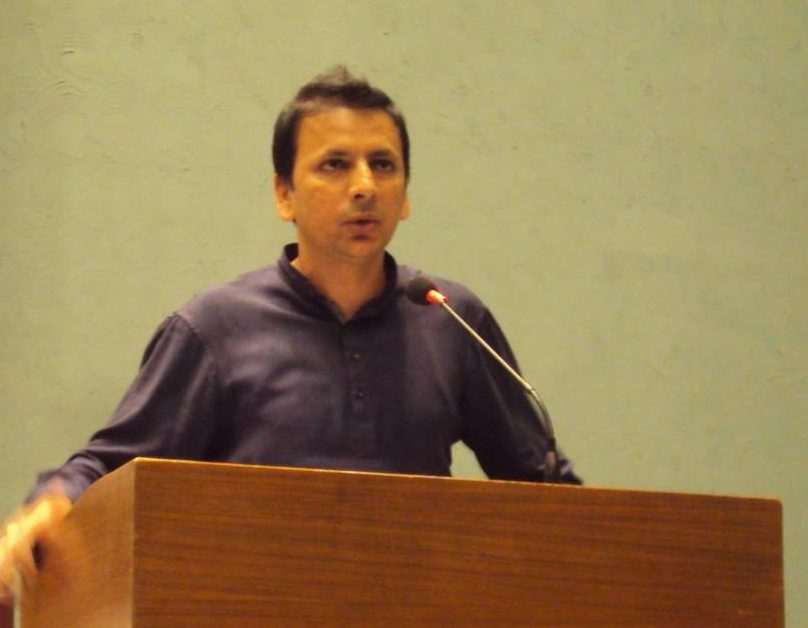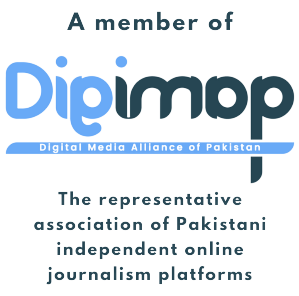
(Dr. Sheeraz Dasti)
Last year’s Urdu friendly ruling of the Supreme Court (SC) of Pakistan opened up the question of nation’s language planning. This intervention in the status uplift of Urdu unleashed a futile debate between the Sir-Syeds and the Macaulays of our times and spaces. I italicized ‘our times and spaces’ keeping in mind a different nature of contemporary ecological and economic factors that have/are defining linguistic growth in the country; I prefix ‘debate’ with the qualifier ‘futile’ because this debate is all based on some imaginary notions perceived as truths. Some of these imagined truths call for a review prior to a discussion on the implications of the SC decision. One of these myths is that institutions such as National Language Authority (now National Language Promotion Department) are linguistic organizations working for the development of Urdu; and the second is that English is the official language of Pakistan.
Unfortunately, institutions established to develop languages, particularly Urdu, were never linguistic. At some point in Pakistan’s history they miraculously discovered that poets, critics, bankers, journalists, and humorists—indeed with access to the power corridors—were the best corpus planners, and could be blindly trusted for top positions at institutions for language development. Their incompetence led to a snail-paced or no development of all Pakistani languages especially Urdu. The institutions that were established for the corpus planning of Urdu–to assume the official language status as per article 251 of Pakistan’s current constitution–occluded their own goals, thanks to their heads’ lack of vision, ideological biases, and preferred personal interests. Except for a couple of dictionaries and glossaries, and some works of value on Urdu-as-official-language, they did nothing. In some cases these institutions did exactly opposite to what they were supposed to do. The National Language Authority (NLA), for instance, was established to promote Urdu to rid us of the colonial language and cultural ideology, but ironically, it went on consuming its financial and human resources on translating the Western canonical books into Urdu.
While our institutions were busy publishing books on the ‘khidmaat’ of the influential people (and even places), IIIT in Hyderabad, India, Universität Konstanz in Germany, and University of Colorado at Boulder, USA were conducting major computational linguistic projects on Urdu WordNet, prop- and tree-banking, text mining, and parallel corpora and computational grammar for machine translation and various other linguistic, social and commercial uses. Some works of this nature have also begun in Pakistan, for instance at the Center for Language Engineering at the UET in Lahore.
Contributions of such institutions have made it logistically possible to shift to Urdu as official language but it we still need a reasonable number of computational linguists in Pakistan who could assist in the computation of all that is in English, particularly for banking and commerce because there are thousands of things that our NLA kitabchay cannot do. At present, unfortunately, we have no more than a dozen of computational linguists in the country and no hope for any increase in this number, particularly so, because we do not have even a single computational linguistics training institute (except for some certification that Dr. Sarmad Hussain’s Center for Language Engineering at the UET is offering), and the only department of linguistics in the country (at the Quaid-i-Azam University Islamabad) that could have made some real contributions was recently shut down, thanks again to the vision of our educationists.
In the absence or salt-in-flour like presence of well-trained language scientists, all our conferences, seminars, symposia, etc. on linguistics are populated with speakers who are MA/PhD in literatures in English, Urdu, or local languages, and have good PR, presentation skills, and sufficient number of students and subordinates to walk them through the conference corridors. But just like our language institutions, these conferences on languages will not do anything to ready Urdu for an overnight shift to the official use or to delineate a comprehensive language policy for the country. True that the NLA (NLPD) has developed an e-takhti but unfortunately the world has moved way beyond that. Our institutions such as NLPD need to hire real linguists and trained translators to make a genuine contribution; our conference organizers need to engage linguists to do so.
Secondly, believing that English is the official language of Pakistan is fine as long as it is just a belief like several other beliefs such as those regarding religious and political systems in the country. But, practices contradict perceptions: none in Pakistan actually speaks or writes English. Used just as a tool by the ruling and educated elites, it is English enough to keep the aam aadmi at an arm’s length but in truth, it is Urduish. While an overwhelming majority of those belonging to educated middle classes uses this nearly balanced hybrid, Urduish (four parts Urdu, three English), only a few can boldly claim using Unglish (English that is still very visibly blended with some Urdu). If I may borrow from Parshad et al.’s recent socio-statistical linguistic study “What is India Speaking?
Exploring the ‘Hinglish’ invasion”, and invite your attention to the blurring contours of Urdu and English here, Urduish is now the national lingua of Pakistan. Not Urdu! So in fact, our Sir-Syed’s and Macaulays are naming the same things in two different terms; we’ll be officializing Urdu(ish), an already official and national language. Blame globalization, gentlemen!
Also, instead of translating the historic ruling of the SC into an emotional policing of the linguistic ladder, we need to capitalize upon it and focus on an inclusive policy making. The biggest potential of the SC decision resides in the fact that it will help update Pakistan’s linguistic status planning with a partial shift in our approach from historical-structural to neoclassical to cater to the needs of changing times instead of staying frozen in history. A general agreement exists among scholars that political planning of languages is imperative for non-homogenous speech communities, and arguably, it does end up in hierarchization of a set of given languages. On the basis of the verdict, thus, having Urdu(ish) raised to the official language status, the next in line should be raising various local languages (Balochi, Brahvi, Pashto, Punjabi, Saraiki, Sindhi, and even the minor languages such as Hindko, Shina, Brushaski, Balti, Chitrali, Jadgali, Marri, Khetrani, etc.) to the national language status that would not only allow them to grow but also give a much needed sense of inclusiveness to their speakers.
Upgrading the other Pakistani languages to the national status would, however, remain a challenge unless a complete overhauling of the language institutions, academies, boards, sangats, anjumans, etc. is done. Giving golden handshake to most of the employees of these institutions—and “iron handshake” to their heads—would mean a sincere effort toward a good language planning. It is also important to redefine the missions and methods of these organizations. Whether an organization is meant for the development of a language, or literature or literary figures must be clearly defined and practiced. In case the government is unable to do that nitty-gritty, shutting these institutions down once and for all, giving their space and budget to establish departments of linguistics for various universities and letting them play the role would still be a service.
Some intellectuals deconstruct the SC verdict and the shift in the language policy as a threat to English, and consequently, to the internationalized position of the country. However, it is a fact that English (in its indigenized forms: Urduish and Unglish) is here to stay, thanks to the linguistic imperialism. Its global force has made it the most popular language even among the most ethnocentric societies such as those in Europe and East Asia.
The fact that the biggest English (Chinglish/Hinglish) speaking populations of the world currently reside in China and India is indexical to the unshakably positive attitudes towards it. So, this mild linguistic resurgence of Urdu(ish) against its sisterly Unglish will not drive ‘English’ away, and our international needs can be met with the ever rising globalized middle classes that are already, according to an estimate, around sixty million. It will still remain a tool of individual, ‘worldly’ prosperity here, just like Arabic that has to stay here for spiritual prosperity. Such self sustainable languages need no pleaders, gentlemen!
Thus reading the court’s ruling as a blessing in disguise, and travelling the miles between the imaginaries and the in-facts, Urdu(ish) may be adopted, in well calculated steps, as the co-official language with English/Unglish; provincial/regional languages should be adopted as national or co-national languages with Urdu(ish) (in which case Urdu(ish) would be both our co-official as well as the co-national language); and most importantly, linguists should be allowed to work on and for the languages. The linguists, however, are not the persons, who can speak a particular language, or scribble verses in it, or can count numbers or crack jokes in it.
About the author
On leave from the International Islamic University Islamabad, the author is currently a lecturer at the Department of Asian Languages and Civilizations, University of Colorado at Boulder, USA.

